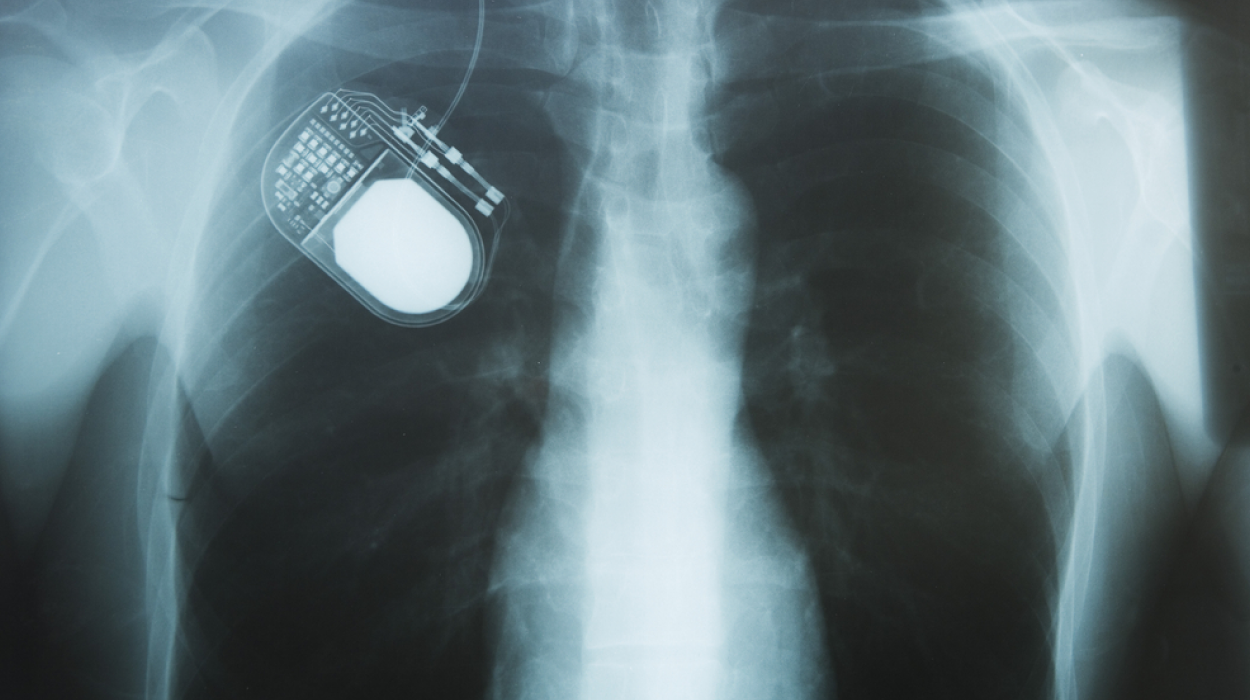What is an implantable cardioverter-defibrillator?
An implantable cardioverter-defibrillator, or “IСD,” is a device that goes under the skin near the heart. It can sense and treat certain abnormal heartbeats.
The heart needs to beat normally to pump blood to the brain and the rest of the body. But sometimes, a person’s heartbeat can suddenly become abnormal. The heartbeat could be too slow, too fast, or out of rhythm.
Some abnormal heartbeats are dangerous, because they can prevent the heart from pumping blood to the brain and rest of the body. “Cardiac arrest” is when an abnormal heartbeat prevents the heart from pumping blood normally. A cardiac arrest can happen without warning, and can cause death if it is not treated right away.
An ΙCD can treat the abnormal heartbeats that can lead to a cardiac arrest. People who have an IСD have a greater chance of surviving a cardiac arrest.
Why might I need an ICD?
You might need an ICD if you:
- Have a condition that can cause abnormal heartbeats
- Had 1 or more episodes of abnormal heartbeats
Some people with an ΙCD need other treatment as well, like medicines or procedures.
How does an ICD work?
It can:
- Sense abnormal heartbeats
- Give the heart 1 or more treatments if the heartbeat becomes abnormal – This can involve sending quick electrical pulses to make the heartbeat at a certain speed. It can also involve giving a shock of electricity. These treatments can get the heart to beat normally again on its own.
- Record abnormal heartbeats, so a doctor can see how a person’s heart has been beating
What does an ICD look like?
There are different types of ICDs.
An ІСD has 2 parts:
- Battery– This sits under the skin. Depending on the type of ΙСD, it goes either in the upper chest or on the side, near the armpit. When the ІСD senses an abnormal heartbeat, the battery creates an electrical shock or shocks that travel through wires to the heart.
- Wires, also called “leads” – In many ICDs, the wires go from the battery through a vein (blood vessel) and into the heart. There is also a “subcutaneous ІСD,” or “S-IСD,” that has wires that go under the skin. These wires sit near the heart but not actually inside the heart.
To insert an IСD, the doctor makes a cut (“incision”) in the skin of the upper chest to place the battery. They also place the leads in the correct place and connect them to the battery.
What are the side effects of having an ICD?
Your doctor will talk with you about the different side effects that can happen. Most people do not have any side effects. But they can happen when a doctor puts in an ІСD, or in people who have had an ICD for a while.
What should I expect if my ICD gives a shock?
You will probably feel it. It can hurt, but is very quick. In some cases, your abnormal heartbeat might make you pass out before you feel the shock.
If your IСD shocks you, call for emergency help (call 9-1-1).
What if I want to get pregnant?
Talk with your doctor or nurse. Many people with an ΙСD can have a baby.
What will my life be like?
Most people with an ІСD have a normal life. But you will need to:
- Check your ΙСD regularly to make sure that it works – Many people can check their ΙСD from home, using a phone or computer.
- Talk to your doctor about driving – Many states do not let people drive for some time after getting an ІСD put in or after getting a shock from the IСD. Your doctor will tell you how long to wait before you drive again.
- Avoid certain electric or magnetic sources – Your doctor will tell you which ones are safe to be near, and which ones to avoid. For example, some people with an ІCD should not walk through a metal detector at the airport. People who cannot walk through a metal detector can have a security search by hand instead.
- Be aware of cell phones and other devices – Some cell phones or other devices, like “smart watches,” might have a strong magnet that could affect the IСD. If you are not sure if your device has a magnet, check with the company that made it, or ask your doctor. To be safe, it’s a good idea to carry your cell phone in a pocket or bag below your waist so it is not right next to the IСD.
- Tell all of your doctors and nurses that you have an IСD – Some procedures and tests are safe for people with an ΙCD, but others are not. For example, most people with an ΙСD should not have a type of imaging test called an MRI scan, but some new ICDs are safe in the MRI machine. Most doctors recommend that people wear a medical bracelet telling others that they have an ΙCD.
Some people with an ІСD feel worried or sad. If you feel this way, tell your doctor or nurse, so they can help.

